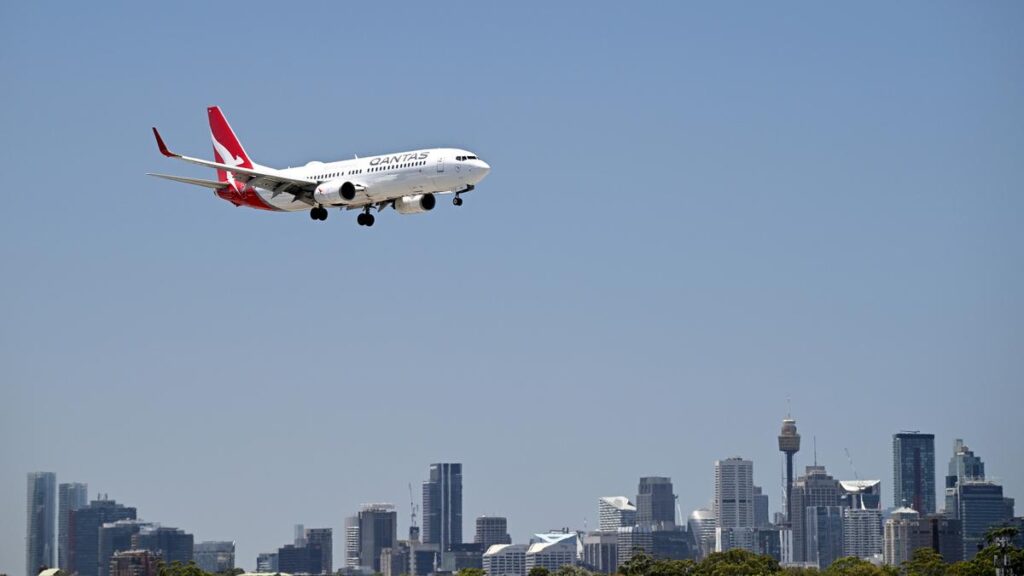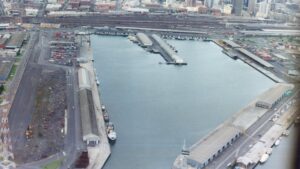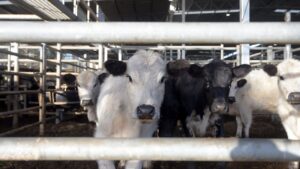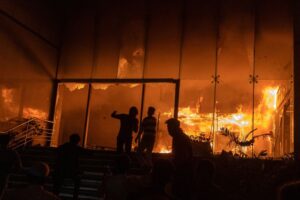
A general view of Qantas aircraft operations at Sydney Domestic Airport in Sydney, Friday, December 20, 2024. (AAP Image/Dan Himbrechts) NO ARCHIVING
Homes have been damaged and hundreds of residents and businesses left without power as wild weather lashes parts of New South Wales’ southeast. The severe winds, reaching up to 93 km/h, have also caused significant disruptions at Sydney Airport, Australia’s busiest, on Wednesday morning.
Multiple flights have been cancelled or delayed, with a pop-up message on the airport’s website warning passengers that only a single runway was in use, potentially causing further delays. Airservices Australia confirmed that the decision to operate a single runway was due to strong westerly winds, adhering to International Civil Aviation Organisation (ICAO) safety regulations to ensure passenger safety.
Impact on Residents and Infrastructure
The Bureau of Meteorology (BOM) issued a severe weather warning for damaging winds across several areas in NSW, including Sydney, the Blue Mountains, the Illawarra, and Wollongong. In Bellambi at Wollongong, wind gusts reached up to 117 km/h at 9 am on Wednesday, while Nowra recorded winds of 106 km/h. Port Kembla and Shellharbour also experienced winds exceeding 100 km/h.
The strong cold front crossing the state is expected to continue causing damaging winds along the ranges and southeastern coastal areas, extending northwards along the Great Dividing Range and the Hunter coast. The front is anticipated to move towards the Hunter Valley and Newcastle later today, with winds peaking at around 90 km/h.
Emergency Responses and Public Safety
The New South Wales State Emergency Service (NSW SES) reported receiving 534 requests for assistance since midnight, primarily due to fallen trees and damage to schools, businesses, and medical facilities in the Illawarra region. In response to the hazardous conditions, Kiama Municipal Council has suspended bin collections in the Gainsborough area, advising residents to secure their bins overnight and place them back out for collection the following morning.
“This decision is purely weather and safety-related to safeguard the travelling public,” stated an Airservices Australia spokesperson.
Historical Context and Expert Opinions
Severe weather events are not uncommon in NSW, with the region frequently experiencing strong winds and storms, particularly during transitional seasons. Experts suggest that such weather patterns may become more frequent and intense due to climate change, which affects atmospheric conditions globally.
Dr. Emily Carter, a meteorologist at the University of Sydney, explains, “The increasing frequency of these severe weather events can be attributed to shifts in climate patterns, which are leading to more volatile weather systems. It’s crucial for infrastructure and emergency services to adapt and prepare for these changes.”
Looking Ahead: Preparedness and Adaptation
As the cold front continues its path northward, residents are urged to remain vigilant and heed warnings issued by local authorities. The NSW government and emergency services are working to restore power and clear debris to minimize disruption.
In the long term, experts emphasize the importance of investing in resilient infrastructure and enhancing emergency response capabilities to better handle future weather-related challenges. The current situation serves as a reminder of the need for comprehensive planning and community awareness to mitigate the impacts of severe weather.
As the situation unfolds, updates will be provided to keep the public informed of any further developments or safety advisories.





